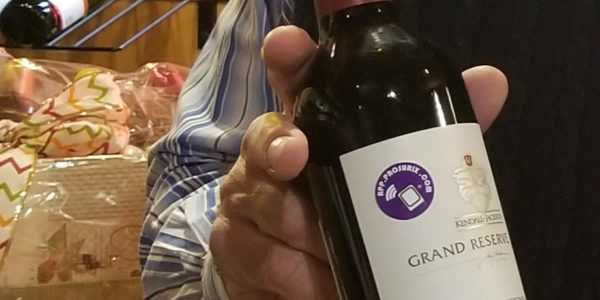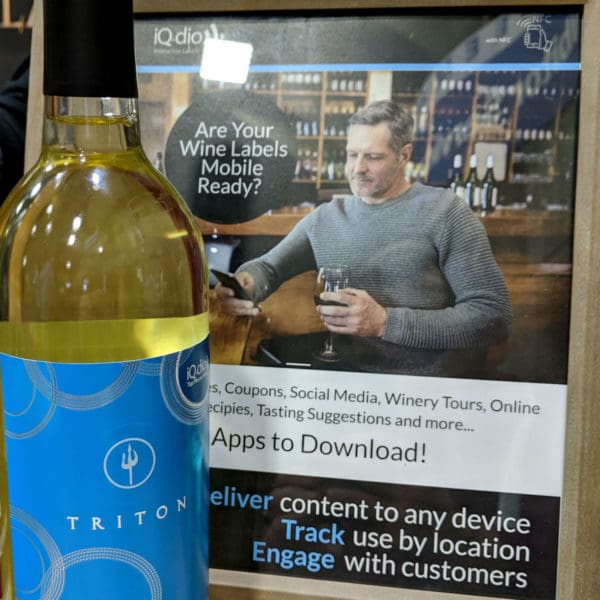By Barbara Barrielle
As the wine world, like all business sectors, struggles to adapt and adopt emerging technologies in communicating messages to existing and potential customers, Professor Damien Wilson says the base root of the issue may be that we are not communicating the message that the consumer wants to hear.
Wilson is the Hamel Family Chair in Wine Business Education at Sonoma State University in the heart of the wine country. He believes the wine business has a history of missing the mark in targeting the consumer, making mistakes like focusing on high level consumer when the majority of wine buyers spend less. “If wineries have an oversupply at the top end and reduce prices to move inventory,” says Wilson, “those consumers that buy at the lower price will not pay up in the future.”
Staggering facts include the fact that “of the 10,000 wineries in the U.S., it is like the top 70 that account for 90 percent of wine sales…so that leaves, 9930 competing for the remaining 10%.”
In addition, the flight of consumers from traditional retail to online buying has some shocking statistics including the fact that the same buyer will spend more per bottle online than in-store and that their online basket is bigger. The online consumer is also incentivized to buy more to meet the “free shipping” threshold because home delivery matters.
Although Wilson clearly feels the wine business is behind in technology, there is some fun being had in labeling and “Smart packaging” is emerging. Even more exciting are the options on the horizon for marketing and communication in packaging as well as authentication and data gathering.
Well-known producer Bogle Vineyards makes and sells a lot of wine, most of it in the less than $10 category. Bogle is reliable, approachable and has a lot of fans. Their premium brand, Phantom, a red blend, was previously released one time during the year and had a healthy following. In launching Phantom Chardonnay, the Bogle family decided to play up the “phantom” story to engage existing consumers and, hopefully, attract new ones.
Bogle launched Phantom red and white with Augmented Reality (AR) labels. These labels have key markers embedded that are picked up by an app and allow the label to “tell a story.”
“We are a family business so we can move more quickly on decisions, but AR is a big investment. It was a big number that gave us pause,” said Jody Bogle. “But, we decided to take some risk and have some fun.
“And our distribution network became very excited. This gives them more tools in the bag to move the needle among competition,” says Bogle, “and the labels will be updated seasonally to keep telling the story of our winery and the Phantom. It is mysticism and spiritualism and something different to everyone. This summer season we will employ ‘gamification’ to engage people in a way that keeps them hooked, inviting customers to find keys, tokens and learn more of the story.”
Rob McAllister, a longtime consultant for Bogle Vineyards who works with the production company, Franklin Pictures, that produced the original Phantom video that launched the Augmented Reality Phantom label, is quick to point out that the typical Bogle consumer is not a young millennial. “Bogle trends toward an older demographic; 30+ years, young families, and grocery shoppers,” says McAllister. “We are not chasing the 24-year-old flash in the pan. That is not the Bogle strategy.”
A hanging neck tag directs the customer to download the app and then scan the wine label to bring Phantom to life. It has been fun and exciting for the Bogle team and they love stories about the sharing of the AR magic, including the Trader Joe’s cashier who was demonstrating to customers in line.
Augmented Reality is an investment and takes time to implement. It also does not provide two-way communication although that is enhanced with gamification. Labels can also be problematic to scan in uncertain lighting and operator error as the Vivino and Delectable apps have experienced. But the quest for information about wine or spirit brand has been clearly demonstrated by the use of phones and their apps in retail locations, restaurants, and tasting rooms.

Near Field Communication (NFC) is the potential solution to this issue. The company Prosurix has an app that was originally developed as a solution to the massive counterfeiting in the wine industry and now has emerged as a marketing, inventory tracking, and two way communication tool.
Prosurix is an app that is instantly downloaded by Android or iPhone and is a simple sticker that contains an NFC chip programmed to reflect a marketing message and audio or video tools. “The algorithm coding prevents counterfeiting and is based on location programming,” says founder Steve Glamuzina who owns a major wine and spirits store in Buffalo, “The Prosurix chip also allows a direct line of communication between producer and consumer which has been difficult in the three-tier system.”
Always seeking out new ways to communicate, Vintage 99 Label started employing iQ-dio digital content technology and, as sales manager Brian Lloyd will tell you, wineries are slow to adapt to technology. He’s been at it for five years with little progress. QR codes, which connect to websites, were employed by some wineries on their back labels but became problematic if a winery did not update their websites and information became outdated. “IQ-dio technology,” says Lloyd, “allows the consumer to have expanded content, including tasting notes, tours, specific varietal information, and promotions. And the iQ-dio chips can be updated in real time.”

Vintage 99 has an example of the RFID chip embedded in a front label but, as Lloyd points out, wineries are reticent to give up that prime real estate, so he understands if it is easier to accept on the back label. However, the iQ-dio system is easy to use for the consumer who doesn’t even need to download an app to take get access to the additional information.
One of his customers, Twin Oaks Valley Winery, does employ iQ-dio on their back label and winemaker/owner Malcolm Gray, who has a technology background, concurs that the wine industry is behind in telling their stories through technology. But, it’s not that simple.
“The benefits of iQ-dio are that tasting and pairing notes, specials, and discounts are available instantly,” says Gray. “Drawbacks are that mostly GenX and Millennials are the target market as they have their smartphones attached to their palm. Baby Boomers don’t seem to be that comfortable with digital media yet, if ever.
“Not to mention, wine is a very personal thing. Without tasting it, the label can only convey so much,” concludes Gray.
Companies Offering Smart Packaging Solutions
Labels and packaging enhanced with Augmented Reality (AR) that turns your labels and packaging into an online 24/7 interactive customer experience with videos, website, and mobile app links to engage and educate consumers.
MaXQ is an end-to-end digital packaging system designed to grow consumer engagement and loyalty powered by Amcor’s technology partner Kezzler.. A single scan lets consumers view complete product information, benefit from updated promotions or even have a live conversation with the brand. Each code is unique and also provides authentication and track & trace. Amcor also worked with Selinko on an NFC chip based tamper detection capsule for fine wine and spirits.
Gliding Eagle’s cloud-based data system tracks each product unit from the source to the end-user around the world. Each step is recorded to ensure product authenticity and channel accountability and is labeled and uniquely identified with a 12-digit code.
Guala Closures Group has developed the first NFC Closure dedicated to the wineries, allowing them to start a 1 to 1 relationship with their end consumers. The NFC tag, co-developed with NXP, is protected in the Cap and delivers majors benefits for the wine brand: Marketing data acquisition, land Track & Trace. For the end consumer it provides authentication and engagement with the brand.
MCC offers Connected Wine embedded with Talkin’ Things technology. It provides customer engagement tools based on proof of purchase, security and logistic options, and a comprehensive data management system. This technology gives maximum protection against counterfeiting and refilling for customer and wine and spirits brands.
The combination of the Prosurix app and unique encoded NFC chips on each product not only form a powerful anti-counterfeiting shield at a low price point, it also offers wineries an opportunity to track their goods and interact directly with the consumer at the point of purchase through the augmented reality features of the app, which can deliver information that informs the consumer at both before and afterward purchase. The app includes a cellar archive for the consumer to keep record of their wines, and brands can communicate with the consumer that has their wine cellared to offer them pairing suggestions or offers of similar products they might like.
The interactive wine labels from Vintage 99 Labels are called iQ-dio and allow wine shoppers and buyers quick access to tasting notes, food pairing suggestions, videos and audio messages from the winemaker, view other varietals, and more. The NFC chip embedded in the label allows mobile devices instant access to this information without having to download an app or navigate through a corporate website.


















Very interesting and educational article!
http://www.buygeocaps.com
Our Geo-Cap wine capsules do all that and tell temperature for the life of the bottle. They also happen to be free in some circumstances.
Geo-Cap in action since 2013.
https://youtu.be/hZPiCpJuj3Q
There are way way more than 10,000 wineries in the world.